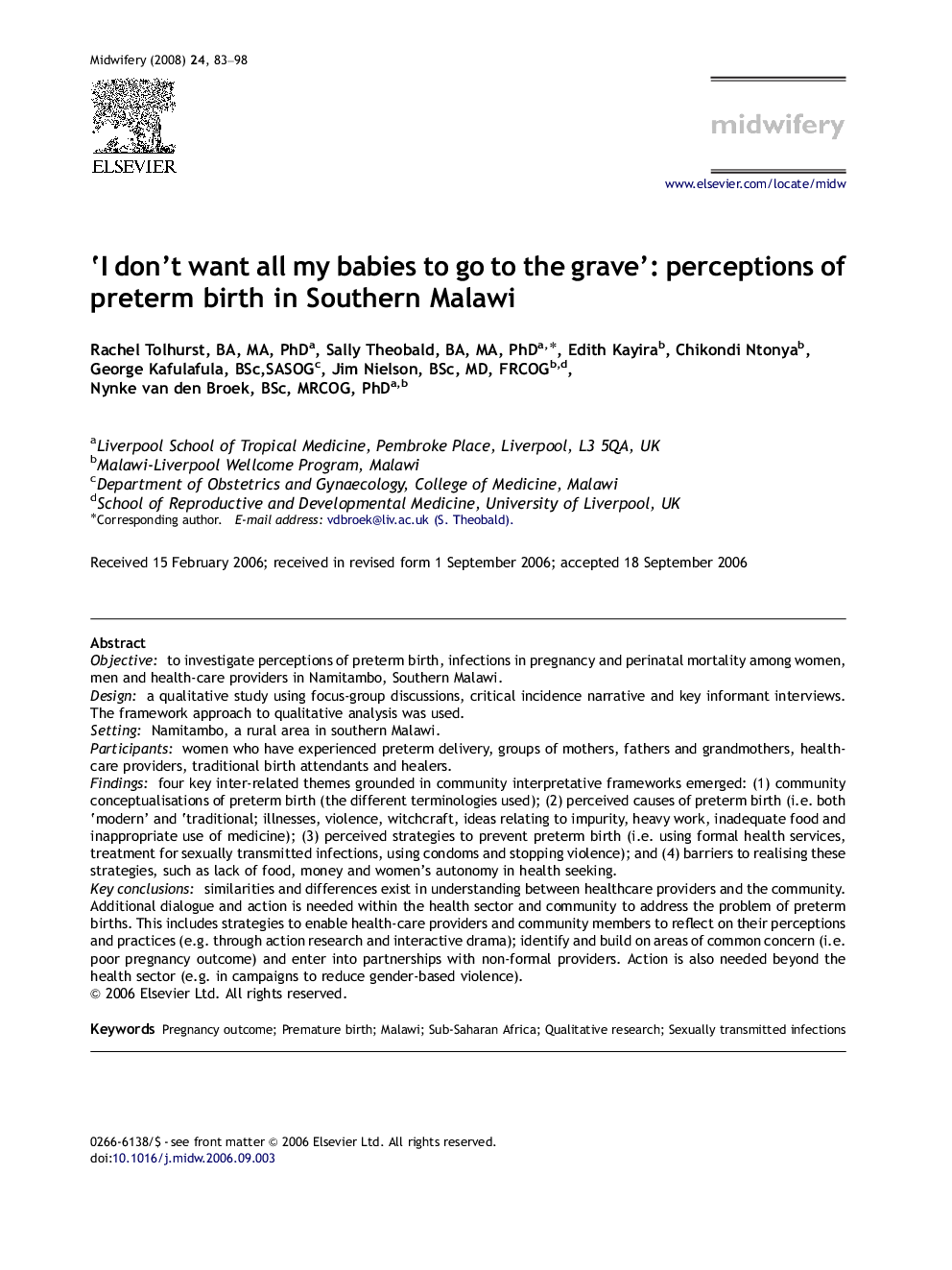| Article ID | Journal | Published Year | Pages | File Type |
|---|---|---|---|---|
| 1084942 | Midwifery | 2008 | 16 Pages |
Objectiveto investigate perceptions of preterm birth, infections in pregnancy and perinatal mortality among women, men and health-care providers in Namitambo, Southern Malawi.Designa qualitative study using focus-group discussions, critical incidence narrative and key informant interviews. The framework approach to qualitative analysis was used.SettingNamitambo, a rural area in southern Malawi.Participantswomen who have experienced preterm delivery, groups of mothers, fathers and grandmothers, health-care providers, traditional birth attendants and healers.Findingsfour key inter-related themes grounded in community interpretative frameworks emerged: (1) community conceptualisations of preterm birth (the different terminologies used); (2) perceived causes of preterm birth (i.e. both ‘modern’ and ‘traditional; illnesses, violence, witchcraft, ideas relating to impurity, heavy work, inadequate food and inappropriate use of medicine); (3) perceived strategies to prevent preterm birth (i.e. using formal health services, treatment for sexually transmitted infections, using condoms and stopping violence); and (4) barriers to realising these strategies, such as lack of food, money and women's autonomy in health seeking.Key conclusionssimilarities and differences exist in understanding between healthcare providers and the community. Additional dialogue and action is needed within the health sector and community to address the problem of preterm births. This includes strategies to enable health-care providers and community members to reflect on their perceptions and practices (e.g. through action research and interactive drama); identify and build on areas of common concern (i.e. poor pregnancy outcome) and enter into partnerships with non-formal providers. Action is also needed beyond the health sector (e.g. in campaigns to reduce gender-based violence).
